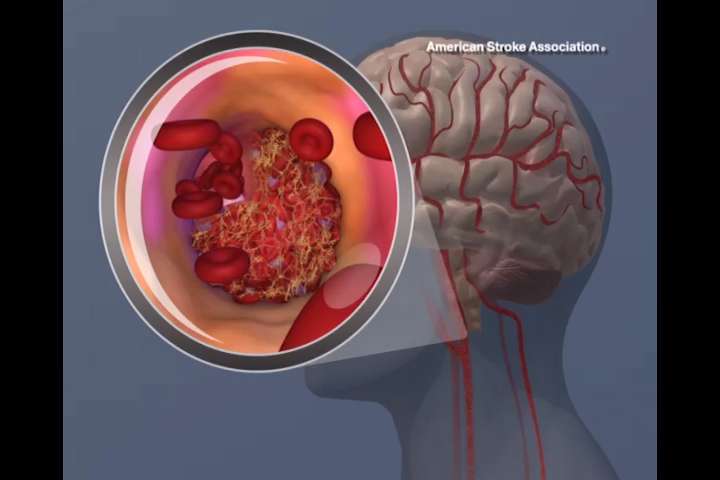A blood clot forming in the carotid artery. Credit: American Heart Association
Scientists have discovered a potential new treatment strategy to reduce the effects of intracerebral hemorrhage (ICH), a severe form of stroke where a blood vessel bursts and bleeds into the brain, causing life-threatening edema and neuroinflammation. Using mice, they found that a ligand of the TPSO protein called etifoxine reduces inflammation and brain edema in animal models. This research has been published online in The FASEB Journal.
"Targeting TSPO can restrict neuroinflammation and brain edema after ICH," said Qiang Liu, Ph.D., a researcher involved in the work at the Department of Neurology, Barrow Neurological Institute, St. Joseph's Hospital and Medical Center, in Phoenix, Arizona. "TSPO ligands have the potential to serve as a new remedy for ICH."
Liu and colleagues made their discovery after inducing ICH in mice by administration of known effectors, with or without etoxifine. Etifoxine reduced leukocyte infiltration into the brain and microglial production of interleukin-6 and tumor necrosis factor alpha, both hallmarks of ICH. The ligand improved blood-brain-barrier integrity and diminished cell death.
"This is a very provocative new lead on ICH," said Thoru Pederson, Ph.D., Editor-in-Chief of The FASEB Journal. "A cytokine axis in ICH is not new, but the notion that this TSPO ligand can do what it does is new, and very promising."
More information: Minshu Li, Honglei Ren, Kevin N. Sheth, Fu-Dong Shi, and Qiang Liu. A TSPO ligand attenuates brain injury after intracerebral hemorrhage. FASEB J. DOI: 10.1096/fj.201601377RR
Journal information: FASEB Journal



















